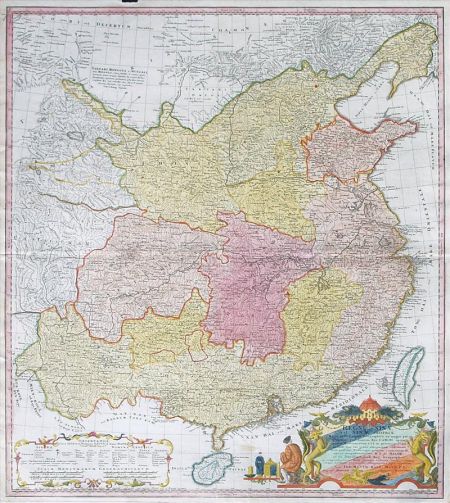
In 1933, the French flexed their colonial muscles and annexed nine of the Spratly Islands. When the news spread, the fledgling and troubled Chinese republic faced a basic problem: It didn’t know where the Spratlys were.
A year earlier, the French had staked their claim to the Paracel Islands as part of their colony in Vietnam. The second French claim to part of the Spratlys befuddled the Chinese. As the scholar Francois-Xavier Bonnet of Irasec, the Research Institute on Contemporary Southeast Asia, noted:
“These two claims of the French government confused the minds … not only of the Chinese public and the media, but also the official authorities like the military and the politicians in Guangdong Province and Beijing. In fact, the Chinese believed that the Spratly Islands and Paracel Islands or Xisha were exactly the same group, but that the French had just changed the name as a trick to confuse the Chinese government. To ascertain the position of the Spratly Islands, the Chinese Consul in Manila, Mr. Kwong, went, on July 26, 1933, to the US Coast and Geodetic Survey and discovered, with surprise, that the Spratly Islands and the Paracel Islands were different and far apart.”
I was led to Bonnet’s much-read discussion paper, “Geopolitics of Scarborough Shoal” (something on the order of 100,000 downloads of the PDF version, I understand, since it was first posted in November 2012), by BBC journalist Bill Hayton. I found his map-based lecture on the origins of China’s South China Sea claims last Friday at the University of the Philippines thought-provoking. When I asked Hayton to expand on his point, that in 1933 the Chinese government did not even know where the Spratlys were, he referred me to Bonnet, who happened to be sitting in the audience (right beside Senior Associate Justice Antonio Carpio).
Bonnet and Hayton have since provided me copies of and links to the essential literature. (Hayton’s “South China Sea: Dangerous Ground” is due from Yale University Press later this year; the title is a play on another name for the Spratlys.) They make for fascinating reading; to be sure, much of the information has been readily available online. Even the delicious irony of a Chinese consul consulting the offices of the US colonial administration in Manila to determine the location of the Spratlys has been knocking about in academic circles and on the Internet for at least a decade.
In 2004, Bonnet wrote “The Spratlys: A Past Revisited” for World Bulletin, a publication of the UP’s Institute of International Legal Studies. His paper already includes a section on “the Chinese confusion” about the location of the nine annexed islands in the Spratlys.
Still, this particular moment in history remains under-known. Some passages from Bonnet’s 2012 paper are perhaps worth repeating.
First, the following footnote. “The Consul submitted, on August 1, 1933, his report to the Chinese Foreign Affairs Department, which said: ‘The islands [in the Spratlys which the French annexed] are collectively known as Tizard Bank and are situated at 530 miles from Hainan, 350 miles from the Paracels and 200 miles from Palawan … The reports mentioning that the 9 islands were part of Xisha [the Paracels] are incorrect’.”
Second, this quote from a letter written by Wang Gong Da, director of the Peiping News, to the foreign affairs secretary: “Don’t make a diplomatic blunder; these islands are not part of Xisha. Triton Island [in Xisha] is the southernmost part of our territory [this was written before China’s absurd obsession with James Shoal]. South of Triton Island, there is no connection with the Chinese territory. Our so-called experts, geographers, Navy representatives, etc. are a shame to our country.”
And third, this passage from a secret report of the Military Council, dated Sept. 1, 1933: “In conclusion, we have only one piece of evidence, our fishermen from Hainan [who are present in parts of the Spratlys], and we have never done anything on these islands. We need to cool down the game with the French, but let our fishermen continue their activities to protect our fishing rights. Our Navy is weak and these nine islands are not useful for us now…”
I’ve tried to look for additional information about the 1933 annexation and the Chinese reaction. There is a news story in (of all places) the Salt Lake Tribune, highlighting what was surely the geopolitical reality of the early 1930s. Datelined Manila, the report began: “The occupation by French dispatch boats of nine islets 200 miles west of the Philippines [the report got this fact right] in the South China Sea was the signal for a race between the Japanese and Chinese consulates here to obtain authentic information about the group.”
There is an internal memorandum of the US Department of State, which noted that “A press dispatch dated July 28, 1933 from Manila stated that Chinese Consul Kwong was instructed by his government to investigate the occupation of the islands by the French and report as the Chinese government intended to oppose French occupation. The Chinese Consul had already sent a preliminary report.”
And who was K. L. Kwong? We learn from a copy of Who’s Who in China (1934) that he was a career diplomat, who once represented China at the League of Nations in Geneva, and who served as Chinese consul-general in the Philippines from November 1930 to June 19, 1934; his next assignment was San Francisco. INQUIRER
* * * On Twitter: @jnery_newsstand




















